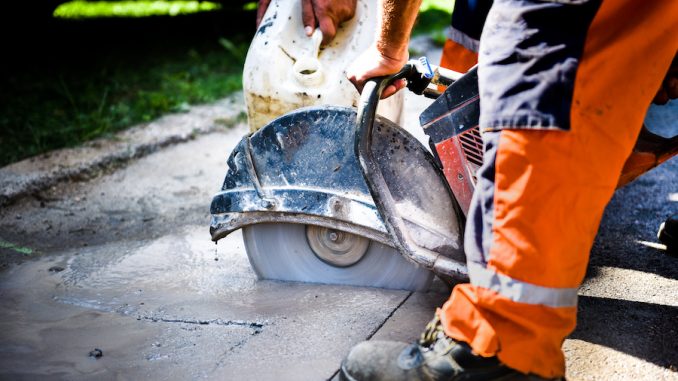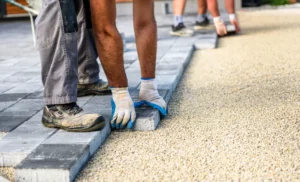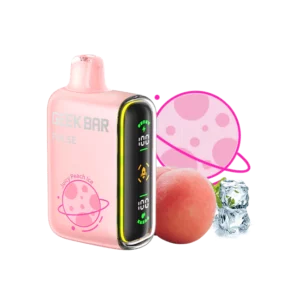Choosing the Right 14-Inch Concrete Saw Blade: A Buyer’s Guide

Concrete cutting is a common practice in various construction and renovation projects. Whether you’re a professional contractor or a DIY enthusiast, selecting the right tools is crucial for a successful concrete cutting job. One of the key components in this process is choosing the correct concrete saw blade. In this buyer’s guide, we will walk you through the essential factors to consider when selecting a 14 concrete saw blade.
1. Blade Type
Concrete saw blades come in various types, each designed for specific applications. The primary options are:
Diamond Blades: These blades have diamond segments embedded in the metal rim. They are ideal for cutting hard materials like concrete, masonry, and asphalt.
Abrasive Blades: Made of abrasive material, these blades are suitable for cutting softer materials such as brick and concrete blocks. They are less durable than diamond blades.
Turbo Blades: Turbo blades have ridges or serrations on the rim, which aid in cooling and dust removal. They are versatile and work well for both wet and dry cutting.
Segmented Blades: Segmented blades have gaps between the diamond segments. They are excellent for faster cutting and better cooling.
Choose a blade type based on the materials you’ll be cutting and the specific requirements of your project.
2. Blade Size
The size of the saw blade is a critical factor. A 14-inch concrete saw blade is a common size and is suitable for various applications. However, you should ensure that it fits your concrete cutter’s arbor size. Blades that are too small may not cut through thicker materials, while blades that are too large may not fit your tool at all. Always check your saw’s specifications and choose a compatible blade size.
3. Wet or Dry Cutting
Concrete saw blades can be used for wet or dry cutting, depending on the project requirements. Wet cutting involves using water to cool the blade and suppress dust. It is ideal for preventing overheating during continuous cutting. Dry cutting, on the other hand, is more convenient and doesn’t require water, making it suitable for outdoor projects or situations where water is not readily available.
4. Blade Hardness
The hardness of the blade is a crucial factor that affects the cutting speed and durability. Blade hardness is measured on the Mohs scale, with higher numbers indicating harder blades. For cutting concrete, masonry, and other hard materials, a harder blade is generally more effective. However, softer blades may be better for certain applications, so it’s essential to choose based on your specific needs.
5. Blade Segments
The design and arrangement of diamond or abrasive segments on the blade impact cutting efficiency. Continuous-rim blades have a smooth, continuous edge, making them ideal for precise cuts. Segmented blades have gaps between the segments, allowing for faster cutting and better cooling. Turbo blades feature serrated segments for both cooling and faster cutting. Your choice should align with the speed and precision required for your project.
6. Blade Quality
Investing in a high-quality concrete saw blade is essential. Quality blades are typically manufactured with precision and feature durable materials that ensure a longer lifespan and better cutting performance. While they may cost more upfront, they can save you money in the long run by reducing the frequency of replacements.
7. RPM (Revolutions Per Minute)
Each concrete cutter has a specific RPM rating. It’s crucial to match your blade’s RPM rating with that of your cutter to prevent overheating and damage. Running a blade at a higher RPM than it is designed for can cause excessive wear and reduce its lifespan.
8. Safety Considerations
Safety should always be a top priority when working with concrete saw blades. Make sure to wear appropriate safety gear, including eye protection, hearing protection, and dust masks when cutting concrete. Additionally, follow all safety guidelines provided by the manufacturer of your concrete cutter and blade.
9. Budget
Consider your budget when selecting a 14-inch concrete saw blade. While it’s essential to invest in a quality blade, there are options available to suit various price points. Keep in mind that a high-quality blade may cost more initially but can save you money by lasting longer and performing better.
Conclusion:
In conclusion, choosing the right 14-inch concrete saw blade is a crucial step in ensuring the success of your concrete cutting project. Consider factors like blade type, size, wet or dry cutting, hardness, segments, quality, RPM, safety, and budget. By carefully evaluating these elements and selecting the blade that aligns with your specific needs, you can achieve efficient and precise concrete cutting results while ensuring the longevity of your tools. Remember that safety should always be a top priority, so take the necessary precautions when working with concrete saw blades.









